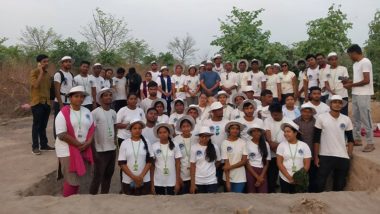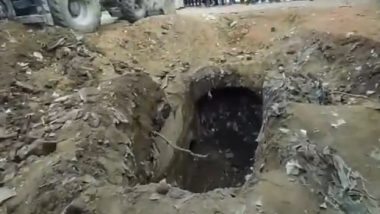Sambalpur, June 12: Excavations at Barpali in Odisha's Bargarh district have unearthed 2,000-year-old artifacts, uncovering a civilization dating back to the post-Mauryan period.
With an objective to ascertain the cultural sequence of Asurgarh in Barpali, the excavation was started at the site by the history department of Gangadhar Meher University on May 31. Around 60 students took part in the excavation.
The site extended over 17 hectares. It has two moats and two forts with three gateways, assistant professor Atul Pradhan said.
From the excavations and recovered artifacts, it could be concluded that the habitation was an urban settlement belonging to the post-Mauryan period, which was about 2,000 years ago, he said.
During excavations, ancient artifacts such as coins, seals, iron weapons, fragmented terracotta figurines, black slipped ware and red slipped ware were found. Skeletons of 282 Indian Soldiers Killed in Revolt of 1857 Found During Excavation near Amritsar.
There were large numbers of knobbed ware pottery, which is a unique feature of early urbanisation and a sign of trade and commerce. The excavation also yielded an iron smelting hearth.
Other important antiquities such as saddle querns, arrowheads, a fragmented crucible, microlithics, polished stones and beads of semi-precious stones were also recovered.
"The structures and habitation remains are still visible in sections of the mound. Other important antiquities found at the site include hopscotch and fragmented part of terracotta ring wells. The findings clearly indicate that it was an early trade centre. We have sent some samples to a laboratory in Nasik," Pradhan said.
The things were found during excavation of only a metre from the surface, he said.
"We stopped the excavation today (Sunday). However, we have planned to dig more after the monsoon. We are hopeful to get links beyond the post-Mauryan period," he added.













 Quickly
Quickly




















